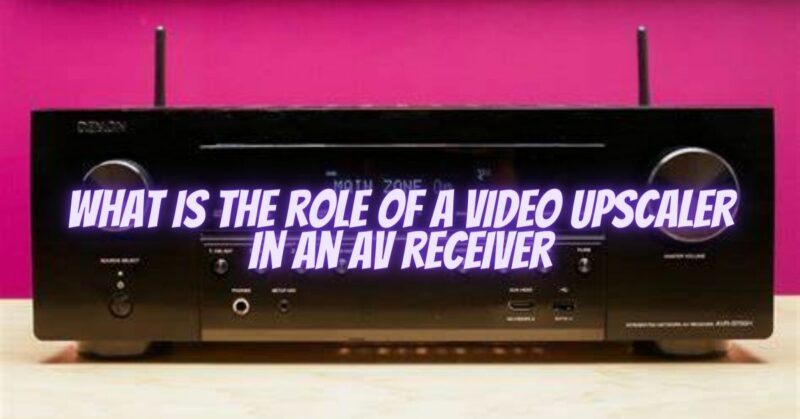AV receivers serve as the central hub for audio and video processing in home theater systems, offering a multitude of features to enhance the overall viewing experience. One notable feature found in many AV receivers is the video upscaler. This technology enhances the visual quality of lower-resolution video content, providing a more immersive and enjoyable viewing experience. In this article, we will explore the role of a video upscaler in an AV receiver and how it enhances visual fidelity.
Understanding Video Upscaling: Video upscaling is the process of increasing the resolution of lower-resolution video content to match the resolution of the display device. The aim is to improve the visual quality by adding more detail and clarity to the image. Upscaling is particularly useful when watching content with resolutions lower than the native resolution of the display, such as DVDs or older video sources.
The Role of a Video Upscaler in an AV Receiver:
- Resolution Compatibility: AV receivers equipped with video upscaling capabilities ensure compatibility between various video sources and the connected display. They can accept video signals of different resolutions and upscale them to match the native resolution of the display device. This ensures that the video content is displayed in the optimal resolution without black bars or distortion.
- Enhanced Detail and Clarity: Video upscaling algorithms analyze the lower-resolution video content and intelligently add additional pixels to create a higher-resolution image. This process enhances the level of detail and clarity in the upscaled video, resulting in a sharper and more lifelike picture. Fine textures, edges, and intricate patterns become more pronounced, making the viewing experience more immersive.
- Reduction of Pixelation and Artifacts: Lower-resolution video content, especially when viewed on high-definition displays, can suffer from pixelation and visual artifacts. A video upscaler in an AV receiver helps reduce these issues by applying sophisticated algorithms to smooth out pixelated edges, minimize visual artifacts, and improve overall image quality. This results in a cleaner and more visually pleasing presentation.
- Seamless Integration with Different Sources: AV receivers with video upscalers offer seamless integration with various video sources. They can upscale content from DVDs, Blu-ray discs, gaming consoles, and other media players, ensuring that all video sources deliver a consistent and enhanced visual experience. This eliminates the need for separate upscaling devices and simplifies the setup of your home theater system.
- Customizable Settings and Calibration: Advanced AV receivers with video upscaling capabilities often provide customizable settings and calibration options. These settings allow users to fine-tune the upscaling process according to their preferences and optimize the video output. Adjustments may include sharpness, noise reduction, color balance, and aspect ratio control, ensuring that the upscaled video aligns with personal viewing preferences and the characteristics of the display device.
Conclusion: The video upscaler in an AV receiver plays a significant role in enhancing the visual fidelity of lower-resolution video content. By leveraging advanced algorithms and upscaling techniques, AV receivers with video upscalers deliver a more immersive and enjoyable viewing experience. With enhanced detail, reduced pixelation, and seamless integration with various video sources, the video upscaler in an AV receiver ensures that you can fully appreciate your favorite content, regardless of its original resolution.


